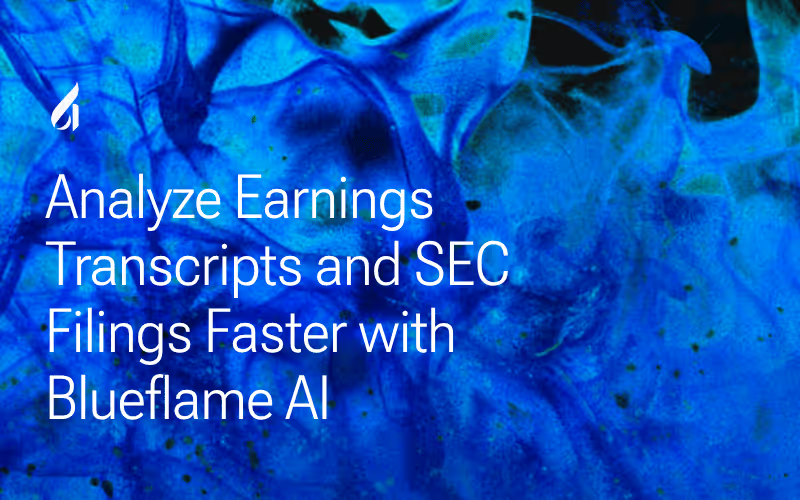Generative AI is on the mind of every venture capitalist, PE executive, and hedge fund operator, from Silicon Valley to Wall Street, and with good reason; the opportunities to deploy AI to drive growth, efficiencies and competitive advantage are unparalleled. Most agree that we’ve only scratched the surface of what AI can do – but some are still stuck on exactly where to begin their AI journey and concerned about their ability to keep up with the breakneck pace of AI innovation.
The current state of AI is far from an end state. Rumors abound that OpenAI could soon release GPT-5, with whispers suggesting it could be a massive leap in AI capabilities. What could the next generation of Large Language Models (LLMs) mean for the alternative investment industry, and what do firms need to know and build into their AI roadmap for success? I sat down with Blueflame AI’s CEO and Co-founder Raj Bakhru to answer some of the top questions we’re hearing from market participants and hear his thoughts on what's next for our industry and emerging areas that will help define the next wave of innovation in gen AI and LLMs.
What could be the next big LLM breakthrough?
Raj: Now that LLMs are largely multi-modal (support text, audio, images, video), as demonstrated with Sora, the next significant advancements will come in math skills and complex reasoning/decision-making to support autonomous agents. “Agents” and the intelligent use of tools by the AI, meaning that the AI can select from various technologies to compose work. For example, if asked to generate a sales proposal, the AI will know to leverage tools to find past emails and interactions with the prospect, to leverage Word to construct a proposal, to leverage Outlook to draft an email with the proposal, etc. Agents stitch together the pieces of work.
We expect the next generation of models to dramatically reduce the likelihood of hallucinations, dramatically increase the “acceptance” hit rate on work (meaning higher-quality outputs), better take advantage of real-time data, better parallelize tasks, and be faster and more efficient at generating outputs.
What could these innovations do for the state of AI and AI adoption?
Raj: Agents have a long way to go to achieve “AGI,” Artificial General Intelligence, where the AI can make complex decisions and rational choices. Speed is also a significant barrier to success today: the most advanced models take an order of magnitude longer to respond than is acceptable for widespread adoption within technology.
AI is rapidly advancing from “something cool to play with” to a “must-have” to remain relevant and competitive in business.
What are the implications for businesses?
Raj: The implications are vast and extreme: it will impact every future hiring decision. All employees will need to upskill how to use and leverage AI tools and how the agents can supplement (not replace) them. Some business models, e.g., ads and movie creation, will be entirely upended. Other business models will dramatically evolve. Many businesses that rely on BPO (business process outsourcing) will move to leverage AI instead of BPO, which can dramatically impact the outsourcing business and people employed in those countries (e.g., India, Philippines). It can have a massive impact on the profitability of companies that rely on BPO revenue and those that heavily leverage BPO.
Blueflame AI Resources
Don’t miss these resources we’ve created to help your firm move from merely planning your AI journey to strategically implementing AI across your firm.
- AI Implementation Checklist
- Buy vs. Build: How to Make Informed Decisions as You Invest in AI
- How to Define Your AI Use Cases
- AI Use Case Template
Want to learn more about how Blueflame can help you deploy generative AI today and ensure your firm is prepared to leverage future innovations?
Request a demo today to see how we're making gen AI work for alternative investment managers.

.avif)


